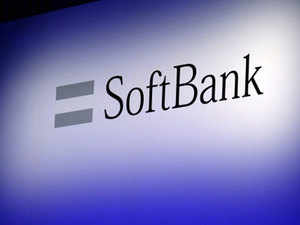 AFP
AFPForget that $24 billion writedown on investments that SoftBank Group Corp. reported late Monday. It’s bad. But it’s only paper. The Japanese conglomerate faces a far more tangible problem as the value of portfolios plummet and credit ratings get slashed. The issue is cash. Specifically, at the $100 billion Vision Fund.
Most venture capitalists operate by taking in money from limited partners and throwing it at speculative investments, and then distributing the results (less fees) as those startups sell out or list. The fund does all that, but it also has a curious side deal that allowed it to raise such a large pile.
Approximately $40 billion of its money came in the form of preferred equity, requiring managers to pay a 7.5% annual dividend. That’s $3 billion that must be paid out every year, no matter how the underlying portfolio performs.
Ordinarily, we’d expect a steady flow of stock listings — like Uber Technologies Inc., Slack Technologies Inc. and the We Co. — to feed that cash-hungry beast. But the fund’s initial public offerings have so far been lackluster, and the WeWork disaster compounds the lack of cash flow.
Other promising startups, such as Grab Holdings Inc. and ByteDance Ltd., may one day bear fruit. In the current coronavirus market environment, it’s unlikely they’ll churn enough profits to get IPO investors excited, which means the companies are likely to be left in the oven to cook a little longer.
For now, that’s not a problem. The Vision Fund, not SoftBank, last year took out a $4.1 billion, three-year loan led by Mizuho Financial Group Inc., JPMorgan Chase & Co., UBS Group AG and Saudi Arabia’s Samba Financial Group. Yet with the fund almost fully spent and major exits of holdings unlikely in the coming year, the ability to keep paying the dividend isn’t guaranteed. It’s also unclear whether margin calls need to be met on this loan, and whether the plunge in fund value would trigger them. It’s another cloud over SoftBank’s cash needs.
A likely scenario is that the Vision Fund will once again find bankers willing enough to front the required money, but one would expect (hope) they’d ask for some collateral to back it up and charge a hefty enough interest rate to make it worthwhile in these unstable times. If any new loan is structured to invoke margin calls, the fund could ill-afford further paper losses.
While I don’t think SoftBank Chairman Masayoshi Son would like to, there’s also a chance that the Vision Fund may sell or collateralize its assets to shore up cash. SoftBank has already announced plans to do just that for itself — a move that spurred Moody’s Corp. to cut its debt rating — but the fund’s own cash needs can’t be ignored. This would look a lot like another firesale.
The final thing to consider is that even if it the fund can manage to borrow enough cash to pay those dividends, and it can continue to service such loans, and it doesn’t face margin calls, and the sun again shines on the IPO market, those multiple years of $3 billion dividend checks will take away from eventual profits.
The upshot is that for all of Son’s crowing about investing in the coolest tech that will change the world, the future of the Vision Fund really hangs on the ability of bankers to cobble together enough cash to keep it running.











 Get Unlimited Access to The Economic Times
Get Unlimited Access to The Economic Times
